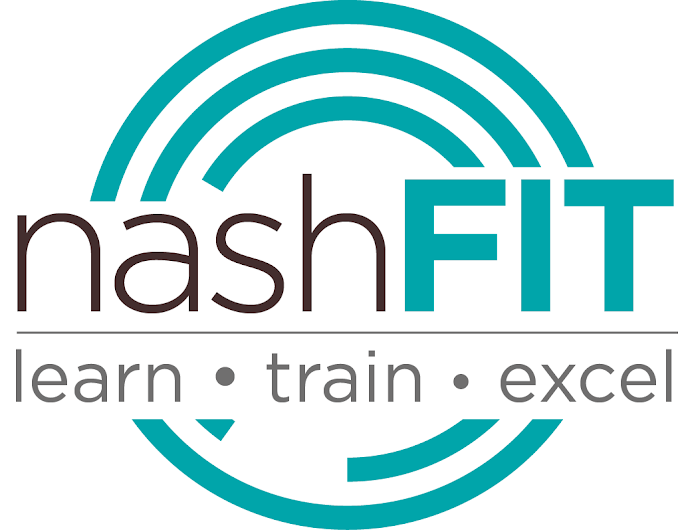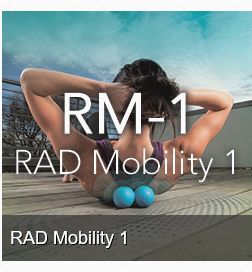In part 2 of this self-myofascial release (SMR) blog, I've examined the specific applications of SMR. For those of you interested in learning more about the science, application of SMR & mobility assessment I have secured you a $50 off promo code http://www.radroller.com/#
Case Study
In order to evaluate the current
P2P model, I've been assessing and using my clients as case
studies and wanted to share one of those experiences. Today I found myself working with a
client who's been complaining of lower back problems, a common complaint
affecting approximately 80% of the adult human population (NASM Essentials of
Personal Training text: P.6). Specifically she was having pain over her PSIS
(hip bone) on the right side. It was preventing her from squatting
deadlifting, from performing numerous other functional activities and worst of
all, from attending my 9am, Tues morning nashFIT class (OMG).
The Assessment Results:
1. Right active straight leg raise
instability
2. Right active straight leg range
of motion restriction / tightness
3. Weak 1 foot Bridge on the left
side
4. Weak glute on the left side and
weak rectus femoris on the right side
5. Synergistic dominance &
over activation of left hip flexors
6. Tight abductors and restricted
range of motion of the adductors
7. Significant instability from
the all fours position, specifically with the right hand and
left knee on the floor (i.e. bird dog).
8. Moderately tight quads both
sides but more so on the left side
9. Overhead Squat:
- Significant shift to the right and for right pelvic rotation
- Fwd torso lean
- Right PSIS uptilt & right fwd rotation of the pelvi
As mentioned previously, I would
typically 1. release all tight muscles then 2. stretch the same before
performing 3. strengthening antagonist activities (i.e. RSS). A recent
trend amongst SMART practitioners is to down play the role
of, if not flat out reject the use of foam rolling / SMR as part of pain
reduction, improved mobility & stability or intelligent movement
reeducation (i.e. motor programming). If SMR could not
consistently help achieve either of the above, it would clearly
suggest self myofascial release is an unimportant tool in corrective
therapy.
P2P Corrective Flexibility &
Movement Correction: I intentionally left the
self-myofascial release techniques to the end.
In my best estimation, her
results were indicating a shift away from immobility on the left side,
possibly due to tightness in the left hip flexor group. Due to the shift and
reduced left side adduction range of motion I began correcting left TFL
tightness. Instead of starting with a release, I went straight to the S's :)
Step 1. Strengthen glutes (i.e. hip
extensors with the Cook hip lift)
Step 2. Reassess overhead squat (no
change to shift)
Step 3. Tfl stretch (i.e. stretch
hip flexors)
Step 4. Reassess overhead squat (no
change to shift)
At this point I was questioning my
results and begin checking ankle mobility. Which was worse on the right than
the left and therefore could not explain the shift. I then corrected many
of the other errors with strengthening exercises. Nothing significantly
changed the shift, but nearly all of the assessment results had been
temporarily corrected.
Enter Self-Myofascial Release: At this point, it was time to begin
myofascial release techniques.
Step 1. release left quadriceps,
left lateral thigh. Here are a couple of videos showing these techniques
https://www.youtube.com/watch?v=41Tgsmol8Og (quadriceps SMR) & active mobility assessment & lateral thigh SMR)
https://www.youtube.com/watch?v=41Tgsmol8Og (quadriceps SMR) & active mobility assessment & lateral thigh SMR)
Step 2. reassess both the Jane Fonda
(adduction) and Overhead Squat.
Result: minimal change to the right
lateral shift but slight improvement to Jane Fonda lateral line mobility.
Step 3. foam roll / release the left
(not as shown) TFL using the "pin and move" technique outlined in the
photo'd article (above) & trigger point manual below.
Step 4. reassess both the Jane Fonda
and Overhead Squat.
Result: upon retesting, the client
immediately said "I can squat". The shift and rotation we're nearly
100% removed and the Jane Fonda assessment symmetrical on both sides.
Without a doubt, SMR was the
biggest, corrective difference maker.
I'm a big believer that there are a
lot of different ways to slay the movement restriction dragons. Regardless
of the techniques trainers and therapists use, the scenario &
outcomes above represent a common occurrence in both the fitness
& rehabilitative fields. I do believe that the combination of release,
stretch and strengthen is more impactful then self-myofascial release
alone (see below video). But, to all those who suggest that foam rolling /
SMR is unimportant, I suggest you keep an open mind &
recognize that well educated execution of SMR can help empower
people towards less pain, better movement and
a reduced incidence of future injury.
Who Should Foam Roll?
Foam rolling isn't for everyone or
required at all time. Nor will it fix all problems. In fact, in some cases
the mobility restriction & or trigger point your rolling
was protecting an underlying joint instability. Understanding the
above statement, I have 4 recommendations:
- Combine SMR with active mobility. Choose a movements in the same plane and ensure you have intregrated active tension (i.e. the client creates the movement, the trainer guides and supports it to minimize movement errors).
- Combine SMR with stability training. Balance training or these 3 core integrated movements 1. plank, 2. side plank and 3. bridge. Both methods are highly effective at ensuring the nervous system turns on and therefore receives important feedback from the joints prior to intense training.
- I've talked about the "dead zone" in previous mobility blogs, but once a new ROM is available, it's essential to actively perform medium paced & tensioned movement within that range.
- Do not self-care foam roll if you currently suffer from any of the below counter indications.
Regardless of the chosen technique or tool, simply rolling up and down muscle isn't the most effective method. But rolling
the entire muscle is an important aspect of the search and destroy method I
teach clients. Here are a few helpful self-applied rolling tips:
The Search:
- Start at the distal point of the muscle. Distal = start farthest from the middle of the body and then perform the following. Move 2 inches towards the middle 1 inch away. Each of these movements should take 2-3 sec.
- When you find an irritated and or unusually raised area (feels like your path was obstructed), stop and begin to "destroy"
- The rolling technique also aids in lymphatic drainage and recovery post exercise.
Destroy the Enemy: there a numerous techniques that work really well but they
all start with pinning the tissue. Pin & move, trap & move, call it
what you want. Either way, compress the tissue then move, ideally in multiple
directions. Here are a few techniques that work well:
- Step 1. Compression Pressure: find the right amount of pressure. Think 5-7 out of 10 with a 5 being green light uncomfortable but bearable for a prolonged period of time. 7 being yellow light proceed with caution but definitely intense. Anything above 7 and generally in the company of profanity and hatred towards others = the no go red light.
- Step 2. Pin & Move: all of the embedded videos use the pin and move technique.
- Antagonist contraction. One way to help tissue release is contract the opposing muscle. If my quads are tight fire the hamstrings (i.e. perform a hamstring curl). This can be done without movement, but movement can help create glide between the myofascia and the muscle.
- Span the muscle. this involves rotation in the opposite of the muscle fiber. Think of like this. Whatever movement you perform in the gym to train that muscle is move in the direction of the muscle. Perform the perpendicular direction while rotating the limb.
- Cross friction. Performed in the same direction of spanning but with a shifting pressure. Feel like you are pulling the tissue side to side without rotation. Attempt to move the tissue as far side to side as possible. If you do this properly (which is a stretch ha ha), this is the best method for breaking scar tissue and myofascial adhesions.
- Pivots. Since undifferentiated fibroblasts (beginning of adhesions) glue to other material in every possible direction and muscles have proprioceptors capable of sensing movement in all directions, it's essential to add a rotating friction motion. Think of this movement like this placing an orange on a fresh juice compressor and twisting. Or cross friction but with added rotation.
- Here's a video link showing all these techniques with the calves.
- Step 3. Details:
- How long? Hold the compression for a minimum of 30 sec but upwards of 90 sec while performing any and all of the techniques below.
- How often? I generally recommend the following:
- Everything should get covered 1x (good & symmetrical mobility) -3x (poor & asymmetrical mobility) per week. That can be broken down as follows
- Pre workout: 1-2x per week for dominant muscles being worked using pin and move techniques
- Post workout: 1-2x for dominant muscles worked that day
- 1x per week stand alone recover and regeneration day. Maybe in combination with a low intensity yoga class.
Takeaways:
- SMR is a difference maker
- SMR is only 1 tool in the toolbox. But, think of it as a hammer Vs a sledgehammer. Don't be the idiot who doesn't own a hammer :)
- It's debatable as to why it works. What isn't debatable, is that it has numerous positive effects.
- Other techniques are equally beneficial, maybe more so depending on the job. A hammer could work, but sometimes a rubber mallet or sledgehammer might the better choice for the job.
- Regardless of how the positive outcome was achieved (i.e. activating the nervous system, increasing blood flow, removing trigger points or breaking myofascial adhesions), it's clear that myofascial release techniques impact mobility and functional movement.
- They can be self administered, but best learned under the supervision of a trained & certified massage / trigger / SMR professional. SMR is contraindicated for some people & conditions including:
- Excruciating pain or bruising isn't the end goal and should be avoided. This is the biggest mistake I see amongst trainers when using these tools. Use the traffic lights pressure - pain scale.
- Rolling is most effective when employing both search and detroy methods.
Chaitow L., DeLany J. (2008). Clinical Application of Neuromuscular Techniques: The Upper Body Vol.1. Philadelphia: Elsevier.
Cook, G., Burton, L., & Hoogenboom, B. (2006). Pre-participation screening: The use of fundamental movements as an assessment of function—part 1. North American Journal of Sports Physical Therapy. 1(2). 62-72.
Knapp, Kali (2016). Self-care modalities: improved performance and decreased injury for female athletes. S & C Journal, 38(2), 70-78.
Diego, M., & Field, T. (2009). Moderate pressure massage elicits a parasympathetic nervous system response. International Journal of Neuroscience, 119(5), 630-638.
Healey, K.C., Hatfield, D.L., Blanpied, P., Dorfman, L.R., & Riebe, D. (2013). The effects of myofascial release with foam rolling on performance. Journal of Strength and Conditioning Research, 28(1), 61-68.
MacDonald, G.Z., Penney, M.D.H., Mullaley, M.E., Cuconato, A.L., Drake, C.D.J., Behm, D.G., & Button, D.C. (2013). An acute bout of self-myofascial release increases range of motion without a subsequent decrease in muscle activation or force. Journal of Strength and Conditioning Research, 27(3), 812-821.
Sullivan, K., Silvey, D., Button, D., & Behm, D. (2013). Roller-massager application to the hamstrings increases sit-and-reach range of motion within five to ten seconds without performance impairments. International Journal of Sports Physical Therapy, 8(3), 228-236.
I look forward to receiving your feedback and hearing your own success SMR stories.
Chad Benson, MSc, CSCS, CPT
email: info@bcpti.ca
Website: +BCPTI
Instagram: @prepair2perform & @bcpti
Facebook: Chad: Activated71 & BCPTI: http://ow.ly/4mK7yR
inkedIN: Chad: http://ow.ly/4mK7QL & BCPTI: http://ow.ly/4mK7fB














